Marsupials, the unique and fascinating mammals, feature unique reproductive tactics and habitats. Found predominantly in Australasia and the Americas, these creatures stand apart due to their extraordinary mode of reproduction—giving birth to tiny, underdeveloped offspring that continue their growth in specialized pouches.
Yet, despite their intriguing biology and diversity, marsupials face several challenges.
Habitat loss and deforestation have threatened many species, such as the endangered koalas. The vulnerability of these animals to human-induced changes in their environment has raised concerns about their survival.
Additionally, the impact of human settlements and the introduction of invasive species have drastically impacted the natural habitats of various marsupials, leading to population declines and habitat fragmentation.
Amidst these challenges, it’s fascinating that the marsupial family encompasses around 250 species, each with unique characteristics and adaptations. For instance, did you know that the wombat’s peculiar cube-shaped feces play a role in marking its territory?
Explore further to uncover how these incredible creatures thrive, adapt, and survive in adversity.
What are Marsupials?
Marsupials are a unique group of mammals known for their unique reproductive method. Unlike placental mammals, they give birth to underdeveloped young that continue growing in specialized pouches.
Examples of marsupials include kangaroos, koalas, opossums, and Tasmanian devils.
These mammals are primarily found in Australasia and the Americas, where they’ve evolved to inhabit various environments, from forests to deserts. One of their defining characteristics is the pouch, which serves as a protective space for nurturing their young during early development.
Their reproductive system involves giving birth to extremely small offspring that complete their growth journey inside the pouch, where they receive nourishment and protection until they are sufficiently developed to survive independently.
This unique reproductive approach sets them apart from other mammalian groups.
Marsupials exhibit diverse characteristics and behaviors. Some, like the kangaroo, are renowned for their leaping abilities and powerful hind legs, while others, such as the koala, are recognized for their specialized diet of eucalyptus leaves.
Despite facing threats such as habitat loss and human intervention, these fascinating creatures continue to captivate scientists and enthusiasts alike with their unique traits and adaptations.
List Of Marsupials
Marsupials comprise a diverse group of mammals defined by their reproductive method. They give birth to underdeveloped offspring that continue their growth in a specialized pouch.
These animals are primarily found in Australasia and the Americas, showcasing various species adapted to various ecosystems, including forests, deserts, and grasslands.
One defining feature among marsupials is the pouch used to nurture and protect their young during early development.
Their reproductive cycle involves the birth of tiny, undeveloped young that complete their growth journey within the pouch, receiving nourishment and protection until they can independently survive.
This unique reproduction method distinguishes them from other mammalian groups and contributes to their intriguing diversity in appearance, behavior, and habitat preferences.
Koalas

Transitioning to the discussion about Koalas, these arboreal marsupials, scientifically termed Phascolarctos cinereus, are iconic creatures native to Australia. Commonly referred to as koala bears, they possess unique characteristics and behaviors that make them fascinating to study.
Koalas possess a set of unique traits. Remarkably, their fingerprints closely resemble those of humans.
Feeding primarily on approximately 2.5 pounds of eucalyptus leaves per day, these herbivores are specially adapted to life in the tall eucalypt forests, low woodlands of mainland eastern Australia, and some coastal islands.
Despite their cuddly appearance, koalas have distinct odors reminiscent of eucalyptus or cough drops. They’re predominantly active during the night and dawn and dusk.
However, these endearing creatures face challenges, notably susceptibility to infections caused by Chlamydiaceae bacteria, affecting various organs, including their eyes, urinary tracts, and reproductive systems.
Curious about what koalas eat, how long koala babies stay in the pouch, or whether koalas can be kept as pets? Explore further to uncover these intriguing facts surrounding koalas and their existence in the Australian ecosystem.
Bandicoot
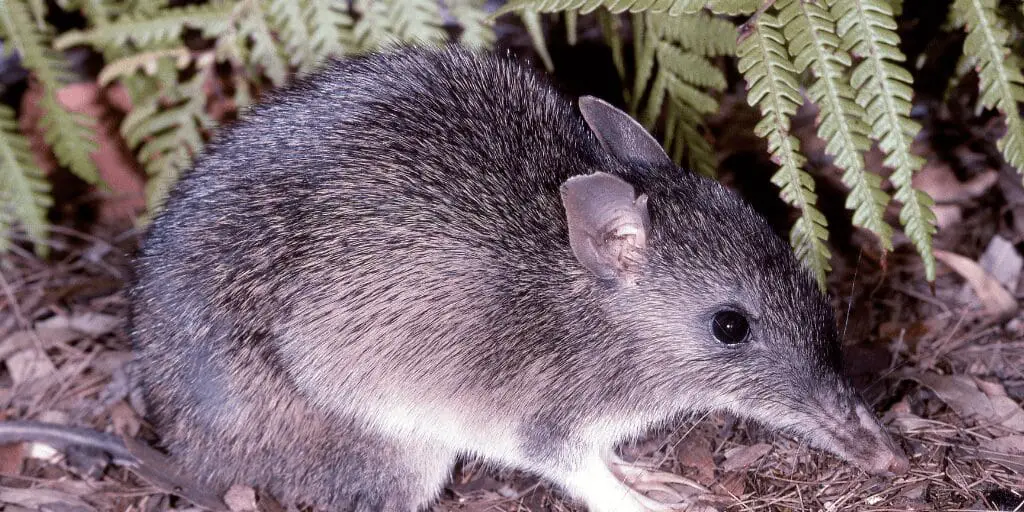
Transitioning to the intriguing world of bandicoots, these small to medium-sized marsupials, found primarily in Australia and New Guinea, encompass over 20 distinctive species.
Known for their nocturnal habits, bandicoots exhibit terrestrial behavior and possess distinctive features such as elongated, pointed muzzles and lengthy tails.
With their front feet, bandicoots dig for a variety of food sources, including underground insects, larvae, and a variety of other things.
Their adaptable nature allows them to thrive in various habitats, spanning from rainforests and woodlands to heathlands. Behaviorally, bandicoots are solitary creatures, primarily active during the night.
It uses its keen sense of smell to forage for food, excavating its underground meals with specialized curved toes. Their running style is referred to as a gallop, showing their agility and speed. From insects to larvae, lizards to fungi, grass seeds, berries, and fruit, bandicoots eat a variety of food items.
Upon discovering food, they emit a contented ‘grunt,’ and when disturbed, they produce a shrill squeak. Are you intrigued about bandicoots as pets, their habitats, or how to manage them in specific environments? Delve deeper to uncover more about these captivating marsupials and their diverse behaviors.
Kangaroo
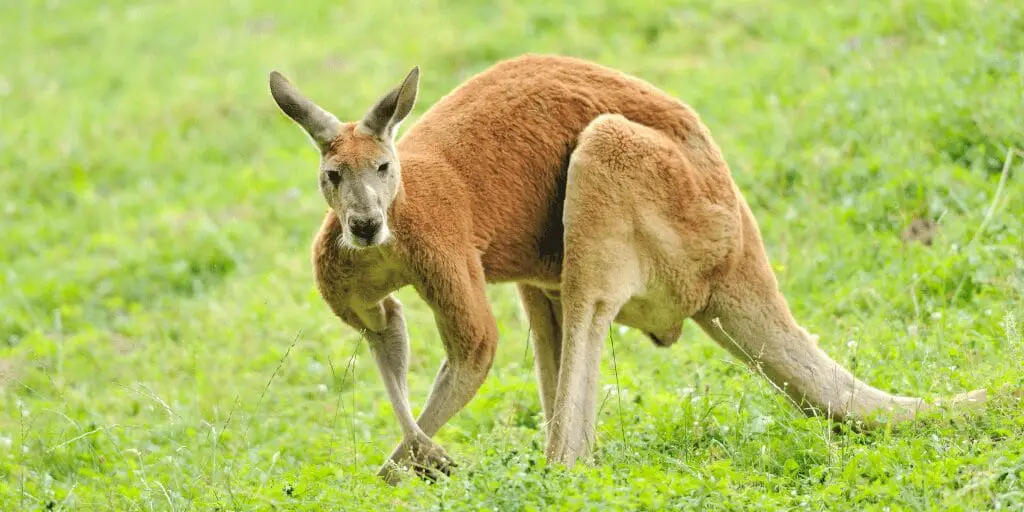
Transitioning into the enthralling realm of kangaroos, these iconic marsupials, scientifically classified under Macropus, represent a symbol of Australia.
Kangaroos are proficient hoppers, using hopping as their primary mode of locomotion. Female kangaroos have a specialized pouch, known as a marsupium, that serves multiple purposes.
This pouch shelters and nurtures their offspring, housing the female’s breasts for nursing and operating as an incubator for the young joeys, safeguarding them from potential predators.
Measuring between 3 and 7 feet in height and weighing up to approximately 200 pounds, kangaroos exhibit small heads adorned with large, rounded ears.
Their astounding jumping ability enables leaps of significant distances, with some males vaulting nearly 30 feet in a single bound. Habitat-wise, kangaroos inhabit various terrains across Australia, Tasmania, and neighboring islands, thriving in diverse landscapes, including forests, woodlands, plains, and savannas.
Their diet predominantly comprises an assortment of plants, including grasses, shrubs, flowers, and occasionally fungi and moss. Living in groups known as “mobs,” led by dominant males, kangaroos exhibit intriguing behaviors such as cud-chewing, akin to ruminants like cows.
Although kangaroos have chambered stomachs, their fermentation process emits less methane, contributing less to global methane emissions. Kangaroos are generally active at night and early morning, resting mostly during the day.
Their water needs are often fulfilled through the water content present in their plant-based diet, enabling them, like camels, to endure periods without drinking water during hotter days.
Delve deeper into the world of kangaroos to uncover more fascinating facts about their evolution, social behaviors, and remarkable adaptations to various habitats.
Wombat
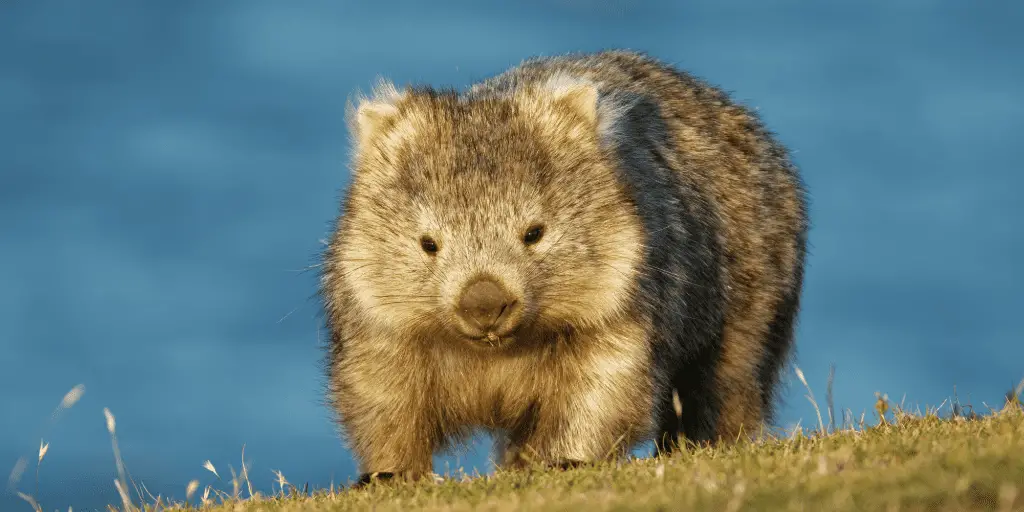
Transitioning to the captivating world of wombats, these endearing and muscular marsupials native to Australia possess a distinctive charm in their stout, short-legged build an impressive burrowing skills.
These delightful creatures reveal fascinating insights into their lives through their dietary habits, living environments, and intriguing behaviors.
Wombats, known for their adeptness in burrowing, hold the title of the largest mammal globally, showcasing exceptional digging abilities rivaling the aardvark. Among the wombats, three species exist, each with unique characteristics and habitats:
- Common wombat: This species thrives in varied terrains like grasslands, forests, and mountains across southeastern Australia.
- Hairy-nosed wombat: Inhabiting drier regions of southern Australia, this species stands out with its distinctive hairy nose.
- Southern hairy-nosed wombat: A critically endangered species restricted to a small area in South Australia.
These herbivorous marsupials predominantly feast on a diet comprising grasses, sedges, bark, and roots, exhibiting selective eating behaviors to secure the most nutritious portions of the plants.
Their robust teeth enable them to chew through tough vegetation, while their coprophagic tendencies involve consuming their own droppings to extract additional nutrients.
The wombat lives in a variety of habitats, including grasslands, woodlands, forests, and mountains. It is a solitary creature that uses these underground networks for shelter, raising the young, and evading predators except during breeding seasons. Wombats prefer the cover of darkness to forage for food.
Wombats exhibit incredible territorial behavior, using scent markings to mark their boundaries and using their claws and teeth to defend themselves against predators like foxes, dingoes, and Tasmanian devils.
Discover more about these intriguing creatures and their fascinating lifestyle, including their diet, habits, and potential suitability as pets.
Quokka
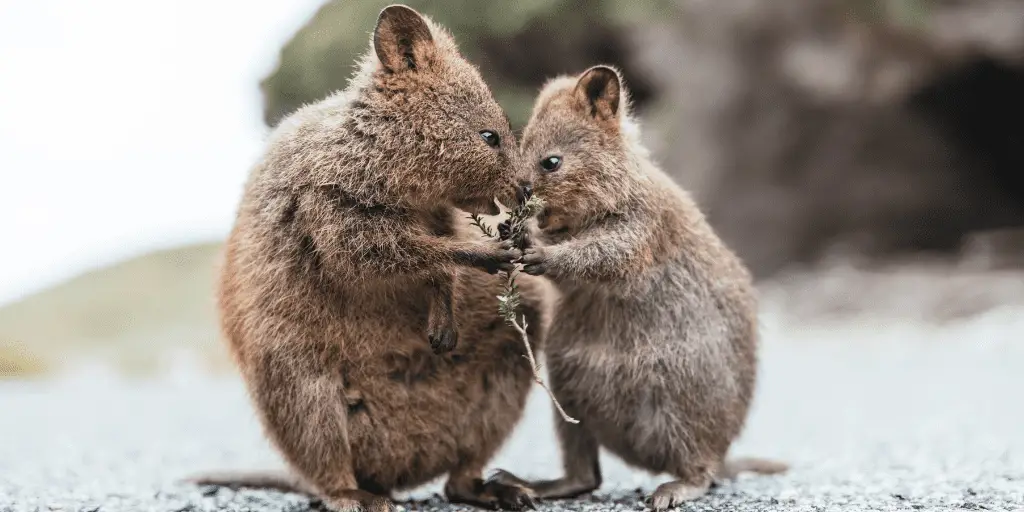
Transitioning into the delightful world of quokkas, these endearing marsupials, known for their charming smiles and friendly attitude, encapsulate the essence of joy in nature. Beyond their adorable appearance lies a fascinating creature boasting unique characteristics pivotal to its ecosystem.
The quokka (Setonix brachyurus) resembles a small domestic cat and belongs to the macropod family alongside kangaroos and wallabies in the Setonix genus. Indigenous to southwestern Australia, these endearing creatures have powerful hind legs and pouches for nurturing their young.
Located on Rottnest Island, Bald Island, and mainland Perth, the quokka thrives in coastal scrubland, woodlands, and heathlands, securing abundant food sources and safe refuges.
As herbivores, quokkas predominantly feed on grasses, leaves, and stems and adapt their diet to seasonal variations. Their menu might also include fruits, fungi, and occasional insects, showcasing their opportunistic feeding habits.
Social by nature, quokkas form small groups of up to 50 individuals, exhibiting activity during dawn, dusk, and night while seeking shelter in the shade during scorching daylight hours. Proficient swimmers exhibit tree-climbing abilities to evade predators.
Reaching sexual maturity at approximately 18 months, female quokkas nurture a single joey in their pouch for several months before the joey becomes increasingly self-reliant.
Despite their enchanting appeal, quokkas are designated as a vulnerable species due to habitat limitations and threats posed by predators like foxes and feral cats.
Ongoing conservation initiatives, including predator control programs and public awareness campaigns, aim to safeguard these endearing marsupials and their habitats. Explore the quokka’s behavior, dietary habits, and the possibility of having them as pets.
Brown Antechinus

Delving further into the realm of unique marsupials, let’s examine the distinctive characteristics of the Brown Antechinus. This lesser-known yet intriguing creature is renowned for its peculiar mating habits and survival strategies, which set it apart in the realm of Australian wildlife.
The Brown Antechinus (Antechinus stuartii) belongs to the family Dasyuridae and is native to eastern Australia. Resembling a small mouse with a pointed snout and a long tail, these solitary creatures showcase notable behaviors during the mating season.
Living predominantly in forests, woodlands, and heathlands, Brown Antechinuses have adapted to diverse habitats, displaying a versatile dietary preference that includes insects, spiders, and sometimes small vertebrates.
What sets the Brown Antechinus apart is its unique semelparity reproductive strategy. During mating, the male’s intense and frenzied reproductive activity leads to heightened stress hormones, ultimately causing its death within a few weeks to months.
Conversely, females raise the young without the male’s involvement after a short mating period.
Given their solitary nature, limited geographic distribution, and unique reproductive strategy, Brown Antechinuses occupy a distinctive niche in Australia’s biodiversity.
Understanding their habits and survival tactics offers invaluable insight into the intricate world of marsupials. Discover more about their habitat, diet, and intriguing mating behavior to unravel the mysteries surrounding these fascinating creatures.
Eastern Bettong
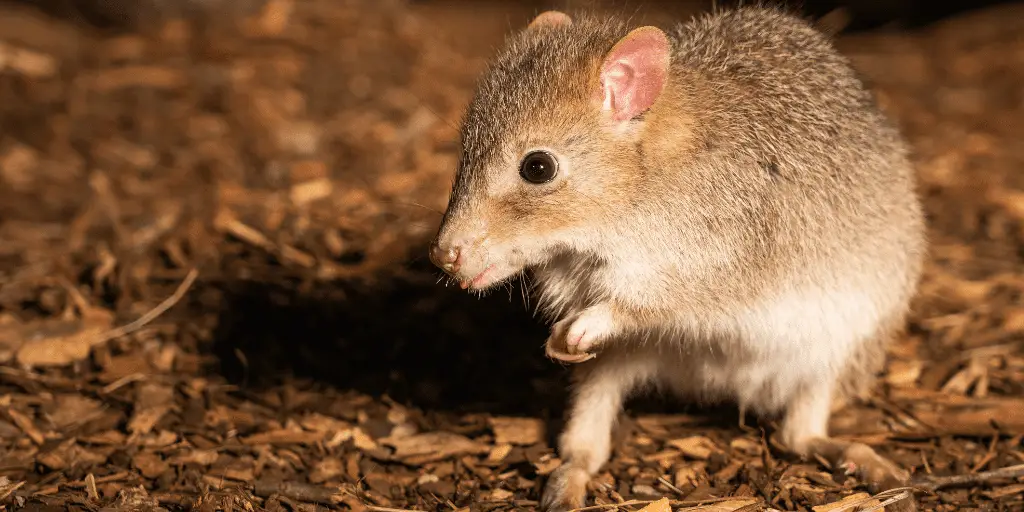
Moving on to another intriguing marsupial species, let’s explore the Eastern Bettong, a unique creature with distinctive features and a critical role in Australia’s ecosystems.
The Eastern Bettong (Bettongia gaimardi) is a small marsupial found in the eastern regions of Australia. Resembling a miniature kangaroo, this nocturnal animal plays a crucial part in the environment, particularly in the natural dispersal of fungi spores.
These adorable creatures predominantly inhabit grassy woodlands and open forests, seeking shelter in burrows during the day. Their diet primarily consists of fungi, roots, seeds, and bulbs, contributing significantly to seed dispersal and the regeneration of plants.
As nocturnal animals, eastern Bettongs emerge at night to forage for food and navigate their territories while being wary of predators.
The Eastern Bettong faces significant threats due to habitat loss, introductions, and competition for resources. As a result, they are becoming a conservation priority to maintain the ecological balance they contribute to.
Studying and understanding the Eastern Bettong’s behavior, habitat preferences, and ecological role are essential for preserving this unique Marsupial and its ecosystems.
Discover more about these fascinating creatures and their ecological significance to appreciate their importance in Australia’s natural landscape.
Eastern Quoll

The Eastern Quoll (Dasyurus viverrinus) is a small carnivorous marsupial known for its spotted coat and nocturnal habits. Historically, this species was found across southeastern Australia, but its range has significantly declined due to habitat loss and predation.
Eastern Quolls are skilled hunters, primarily preying on insects, small mammals, birds, and reptiles. They play a crucial role in maintaining the balance of local ecosystems by controlling populations of various pests.
These marsupials are solitary creatures, often hiding in dens during the day and emerging to forage for food at night. They are agile climbers and hunters, using their sharp teeth and keen senses to navigate their environment and capture prey.
Habitat fragmentation, invasive predators, and diseases pose threats to the Eastern Quoll. Habitat restoration programs and captive breeding initiatives are underway to reintroduce this species into its native habitats.
Understanding the behavior, ecological role, and habitat requirements of the Eastern Quoll is essential for conservation efforts aimed at ensuring the survival of this remarkable marsupial species.
Explore more about these fascinating creatures and their significance in maintaining Australia’s biodiversity.
Opossum

The opossum, a captivating marsupial predominantly found in North and South America, holds a unique place in the continent’s diverse ecosystems.
Opossums are adaptable to various environments and inhabit forests, woodlands, fields, meadows, and even urban areas. Their omnivorous diet includes insects, worms, carrion, reptiles, birds, fruits, berries, and more.
Often seen scavenging for food, these animals aid in ecosystem balance by cleaning up dead animals and organic matter.
Equipped with a prehensile tail, opposable thumbs, and thick fur, opossums demonstrate remarkable survival adaptations. Their ability to climb trees using their tails and grasp objects with their thumbs is crucial for their lifestyle.
In addition to their physical adaptations, opossums employ a unique defense mechanism: playing dead when threatened. This behavior deters predators, allowing them to survive in the wild.
These marsupials play a vital ecological role by controlling insect populations, aiding in organic matter decomposition, and dispersing seeds through their diet. Despite often being considered pests, they contribute significantly to maintaining the balance within their habitats.
Understanding their behavior, dietary habits, and ecological importance sheds light on their significance in the American ecosystems.
Numbat
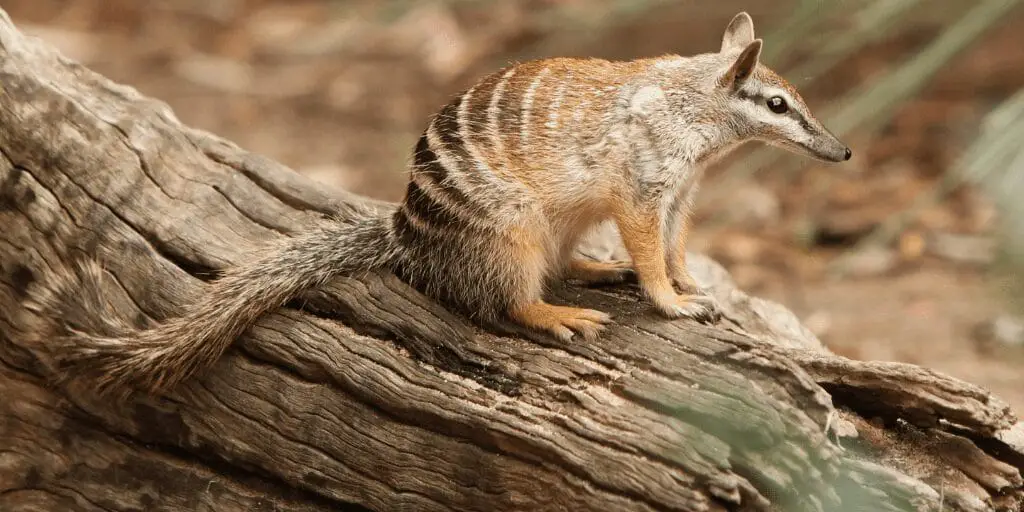
The numbat, an intriguing marsupial native to Australia, stands out for its distinctive appearance and specialized diet. Unique in its own right, the numbat is a small, insectivorous mammal characterized by its reddish-brown fur adorned with white stripes.
Contrary to many other marsupials, numbat’s diet consists almost exclusively of termites.
Consuming over 20,000 termites in a single day, these creatures play a crucial role in termite population control. Once widespread across Australia, numbat populations have significantly declined, with their habitat now limited to small colonies in Western Australia.
Efforts to preserve and protect the numbat have been implemented through conservation programs, including habitat protection and control of introduced predators.
Understanding their dietary preferences and ecological significance highlights the importance of preserving this unique and specialized Marsupial.
Mulgara

Adapted to thrive in the harsh deserts of central Australia, the mulgara is a small marsupial known for its remarkable survival strategies and specialized habits.
This carnivorous mammal has evolved to endure arid conditions by obtaining all of its required water from its food. Feeding mainly on insects, the mulgara also includes reptiles and small mammals in its diet, showcasing its adaptability in the desert ecosystem.
Mulgara are primarily nocturnal creatures but can occasionally be seen sunbathing near their burrows. Their survival techniques, including deriving water from prey and their ability to withstand extreme temperatures, make them well-suited to the challenging desert environment.
Typically found in central Australia, the mulgara’s behavior, diet, and unique adaptations emphasize its significance within the delicate desert ecosystem and highlight the importance of preserving their habitat.
FAQs
Is Marsupial a family?
Marsupial isn’t a family but an infraclass containing over 250 species, including kangaroos, koalas, and opossums. They share unique characteristics like pouches for developing young.
What is marsupial birth?
Marsupials give birth to very underdeveloped young after a short gestation. These “joeys” crawl to their mother’s pouch, latch onto a teat and continue development there.
What’s the difference between marsupials and placentals?
Marsupials don’t have placentas. Their young receive nourishment through milk after birth. Placental mammals, like humans, have a placenta that provides nutrients during gestation.
Is a panda a marsupial?
No, pandas are placental mammals. They give birth to well-developed young and don’t have pouches. They belong to the order Carnivora, while marsupials fall under the infraclass Metatheria.
Conclusion
Marsupials, a fascinating group of mammals, encompass over 250 species like kangaroos, koalas, and opossums. Their defining characteristic is the pouch in which they nurture their underdeveloped young, showcasing distinctive birthing methods compared to placental mammals.
These creatures birth immature offspring, nurturing them within their pouches until they mature. Unlike placental mammals relying on a placenta for prenatal nourishment, marsupials sustain their young through post-birth lactation.
The stark difference between these two groups lies in their reproductive mechanisms. Marsupials lack placentas, relying on post-birth care, while placental mammals, like humans, rely on a placenta during gestation.
It’s important to note that although captivating, pandas don’t fall into the marsupial category. They are placental mammals, distinctly different from marsupials, belonging to the Carnivora order. This diversity in mammalian reproduction showcases nature’s intricate tapestry of life.

